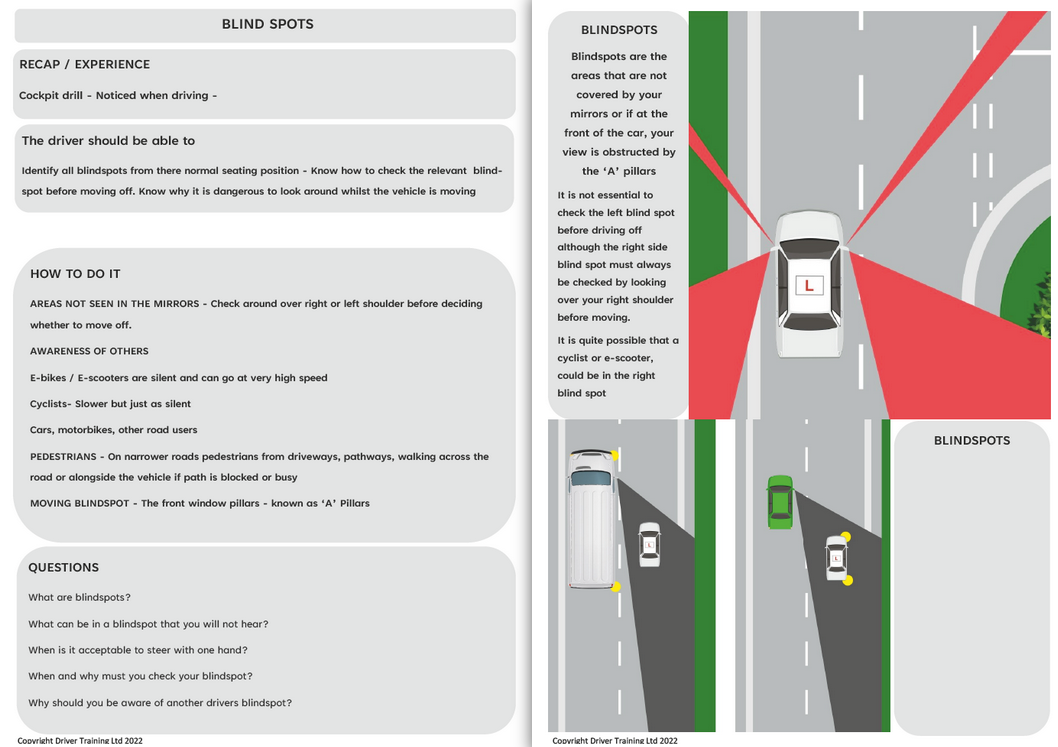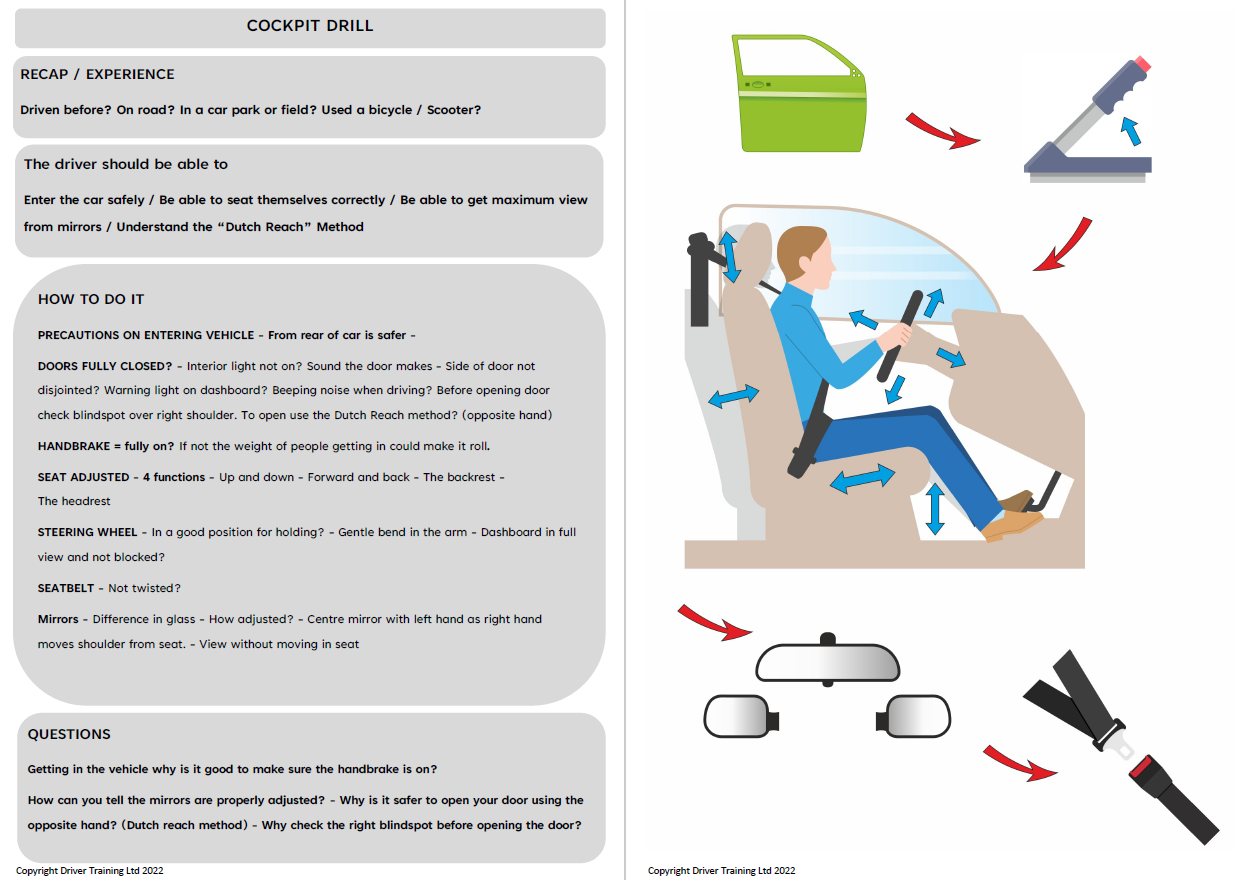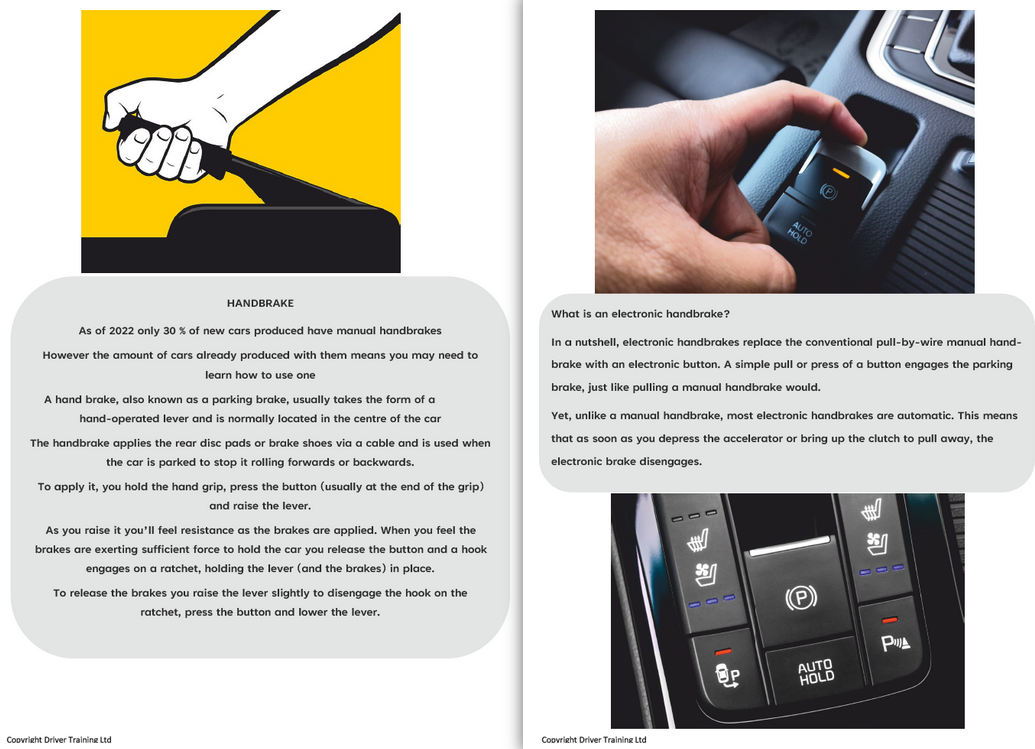Cockpit Drill and Controls Lesson
ADI Part 3 Cockpit Drill and Controls
Cockpit Drill and Controls - DHSSSM
Put simply the cockpit drill and controls session is done on the first lesson tobe able to find out from the pupil what they know about the cars controls and how to use them
If the pupil has no experience in a car you may have to fully explain everything, however if the pupil has either had other driving lessons or experience in a car, they may just need to be asked a few questions to confirm they understand what something does, How it works, or the terms that you are going to use. E.g Biting point, Gas pedal etc.
ADI Part 3 Cockpit Drill - DHSSSM
The Cockpit drill is usually taught as DHSSSM
Doors - 2 stage locking system - 5 ways of telling if its not closed properly
- Sound - does it make a clink noise or a clunk/thud noise
- Does the interior light stay on
- Is there a warning light on the dashboard?
- If you start to drive is there a warning noise or beeping?
- Move your head to look in the mirrors (as they haven't been adjusted yet) to see if the door is level or disjointed
As the pupil does these - you still need to look out for any faults they make and correct them
Cockpit Drill - Handbrake
Cockpit drill handbrake
If you have the ratchet style of handbrake, it is always worth just checking it when you first get in the car to make sure that its on properly. If it isn't, the danger is, that as more weight is put in the car, the car may start to move.
You pull the handbrake up on the ratchet until you meet resistance, then it is on. To release it, lift the handbrake, push the button and hold it in until the handbrake makes a thud noise on the floor.
If you have an automatic handbrake, depending on the car, this may need to be pushed or, some more modern cars, require you to do nothing but start to drive and it will disengage automatically
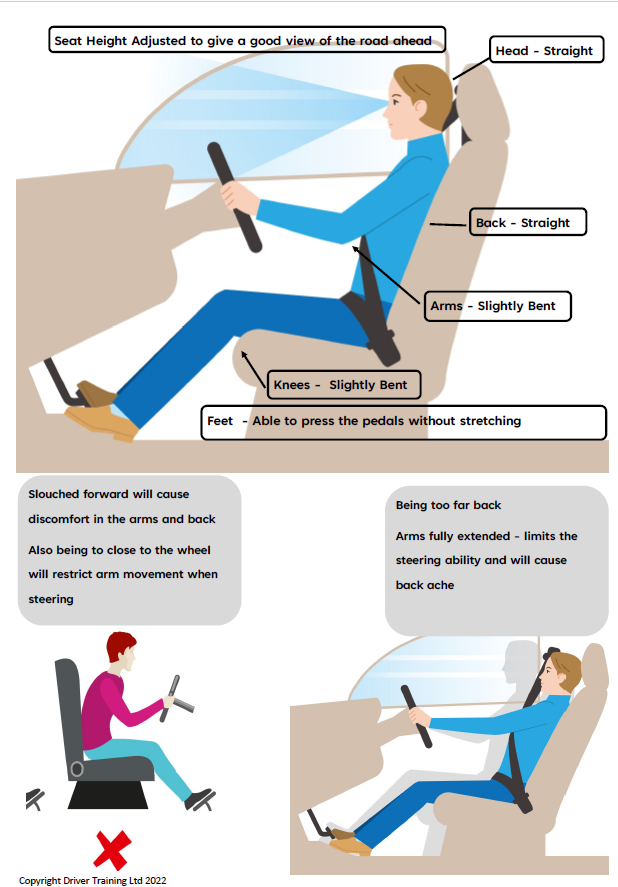
Seat - 4 Functions - Which one to do first
Seat - 4 Functions - Which one to do first?
The first thing that you should do is adjust the height of the seat. The reason for that, is, when the height is raised the seat will move forwards
The second is the forward and back - You need the seat placed so that you press the pedals without stretching and without your legs being cramped in.
The third is the rake or the back rest of the seat
Finally adjust the head restraint
Steering Wheel
It is a common myth that the driving examiners require you to hold the wheel at the 10 and 2 position - although this generally is the best way for learners to not end up crossing their arms and losing steering control
Driving The Essential Skills which is written by the driving examiners - DVSA states that you just need to hold the wheel in a position that is comfortable and help you to keep control of the vehicle.


Mirrors
The first thing to adjust is the centre mirror- This should be done without putting your fingers on the glass and done with your left hand.
If you use your right hand, your right shoulder comes off the seat and so gives a false view of the mirror. You should be able to glance in the mirror without having to move your neck and head to see in it.
Then set up the side mirrors - This should be done so that you can see just the side of the car and then everything out to the side of it
ADI Part 3 Controls lesson
Once you have covered the cockpit drill and the pupil is happy with it, you need to move on to the controls.
This is basically explaining
What it is called - The brake pedal
What it does - Slows the car down like the brakes on a bicycle
How it Works - By applying gentle pressure on the pedal it begins to slow the car down
What your commands will be - Gently on the brake/ Brake harder / Gently brake to a stop
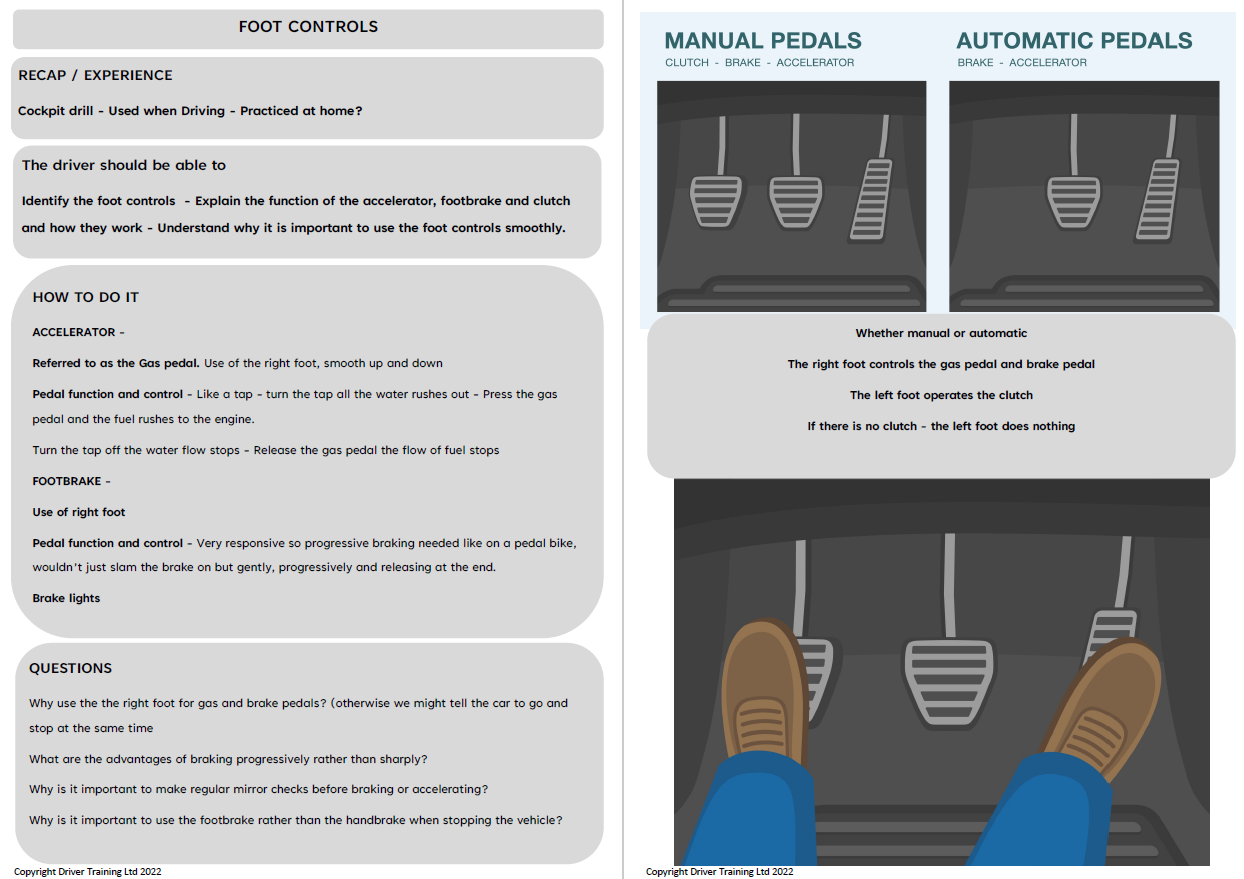
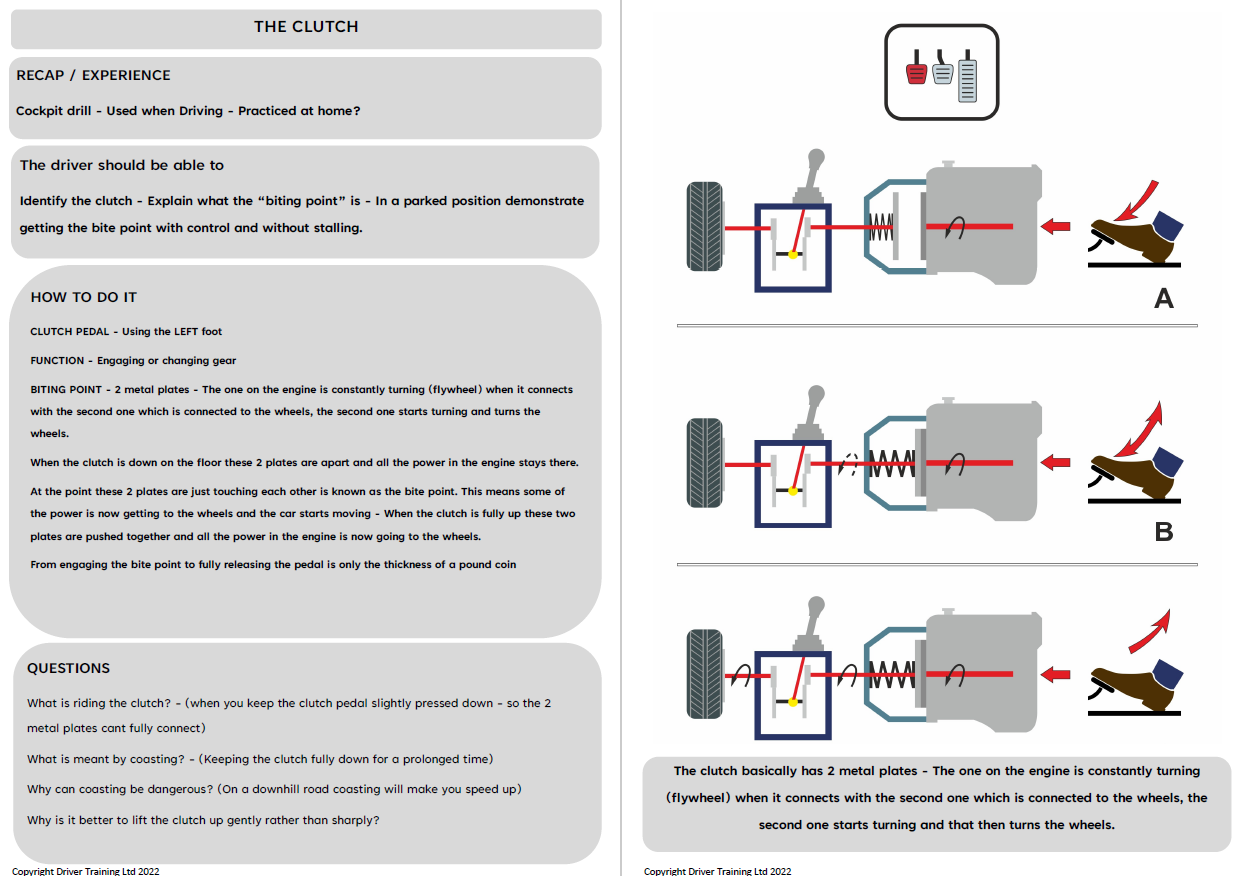
Why this is needed
If your pupil has never been in the drivers seat before - they will not always no what you mean when you ask them to do something.
Remember they are having to do three or four things at once, steer, off the gas, clutch down, change gear so it will take time to remember them and then use them
By doing the cockpit drill and controls, you give them time to practice without the car moving so they have nothing to else to worry about
By using a briefing folder and explaining via the diagrams, this will help them understand more thoroughly
BUT REMEMBER TO KEEP IT BRIEF!!
DON'T BE ONE OF THESE INSTRUCTORS WHO KEEPS THEIR PUPIL AT THE SIDE OF THE ROAD FOR 90 MINUTES EXPLAINING THINGS - THEY WONT REMEMBER IT!!!
For instance - without looking back to the top of this page - what was the first sentence that you read??? - Bet you don't know and that was probably less than 10 minutes ago? - See My Point?
Blind Spots
Understanding where a students blind spots are on the car will help them a great deal.
Common Training Guide Included - Our A4 driving lesson plans for Cockpit drill, controls and Blindspots include all the understanding needed for the driving test, independent driving skills including signs and sat nav, and a checklist for skills acquired with easy spaces for instructor approval. They even come with high quality diagrams and instructions for what to do
